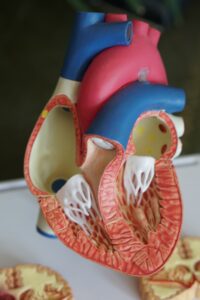Sometimes, blood clots form without giving you any warning. But sometimes, your body sends you blood clot signs that mean you’re heading for trouble. And we want you to identify them easily, so you can seek quick care if any develop.
For NBC anchorman Al Roker, who was hospitalized for a DVT near the end of 2022, recognizing these warning signs was life-saving. In fact, he developed one of the potentially-fatal DVT complications that make this type of clot a medical emergency. As he said, "I was admitted to the hospital with a blood clot in my leg which sent some clots into my lungs. After some medical whack-a-mole, I am so fortunate to be getting terrific medical care and on the way to recovery. Thanks for all the well wishes and prayers and hope to see you soon."
But what is a DVT, what other types of blood clots can develop, and how can you know when one is forming? read on to find out more!

A blood clot forms when some of the blood in your vessels becomes a solid mass. You can develop a clot in your arteries, which carry blood from your heart to your body. They can also form in veins, which carry blood from your extremities back to your heart. Or you can form a clot in your capillaries, whose job is to connect your veins and arteries.
Still, blood clots are most likely to form in your deep leg veins. (We call this clot a deep vein thrombosis or DVT.) Along with identifying blood clot signs, it’s very important to recognize DVT symptoms. Because, if this leg clot breaks free, it could travel to your lungs. There, it becomes a pulmonary embolism, which could be a fatal condition.
Now, in a minute, we'll tell you the symptoms of blood clots to watch out for. But first, you have to know where to look. And, for most people, the warning signs of blood clots will appear in the leg, thigh and ankle, so those are good places to monitor if you're concerned about clot formation.
When a blood clot is first forming, you may not have any visual or physical warning. But there are certain clear blood clot signs in your legs that you need to watch out for.
1. Swelling
If you notice swelling in your leg, and it doesn’t go away when you put up your feet, that could be a warning of a forming clot. That’s especially true if the swelling lasts throughout the day, or if you notice additional signs of trouble.
2. New, lingering leg pain
If your legs suddenly feel crampy, and you don’t have PAD, this new, nagging pain could be one of several DVT symptoms. So it’s worth mentioning to your vein specialist, especially if you already have varicose veins.
3. Changes to your varicose veins
Watch your varicose veins carefully, as any of these changes could be blood clot signs. First, if your vein starts bulging more prominently, and won’t flatten out when you elevate your legs, you could be developing a superficial blood clot.
Other blood clots signs include veins that suddenly turn hard, or surrounding skin that turns red and feels tender to the touch.
As we mentioned, you need to watch DVT symptoms carefully, because these clots can travel to your lungs. If you have a pulmonary embolism, your symptoms can include new or different shortness of breath—especially if it doesn’t go away with rest.
You may also experience lingering chest pain, or chest pain that develops when you breathe deeply. In extreme cases, you may even cough up significant amounts of blood if you have a blood clot in your chest.
If you think you have a pulmonary embolism, you should immediately go to the emergency room. There, you can get a quick CT scan and breathing tests, so we’ll know if you have a blood clot in your lungs. If the tests reveal a PE, treatment can begin right away.
Now, if you only have DVT symptoms, you can skip the ER. But you should schedule an immediate appointmentschedule an immediate appointmentschedule an immediate appointment with our team of Houston and Dallas area vein specialists. Studies show that early intervention is very important when we treat deep vein clots. It means compression therapy and other interventions may be more effective. So, the sooner you alert us to the problem, the sooner we can offer treatment and results. And, more importantly, the less likely you are to face life-threatening complications like a pulmonary embolism!

Scheduling
Please contact our dedicated specialists to schedule a consultation today.
2024 Texas Endovascular. All rights reserved. Website Design by Healthcare Success